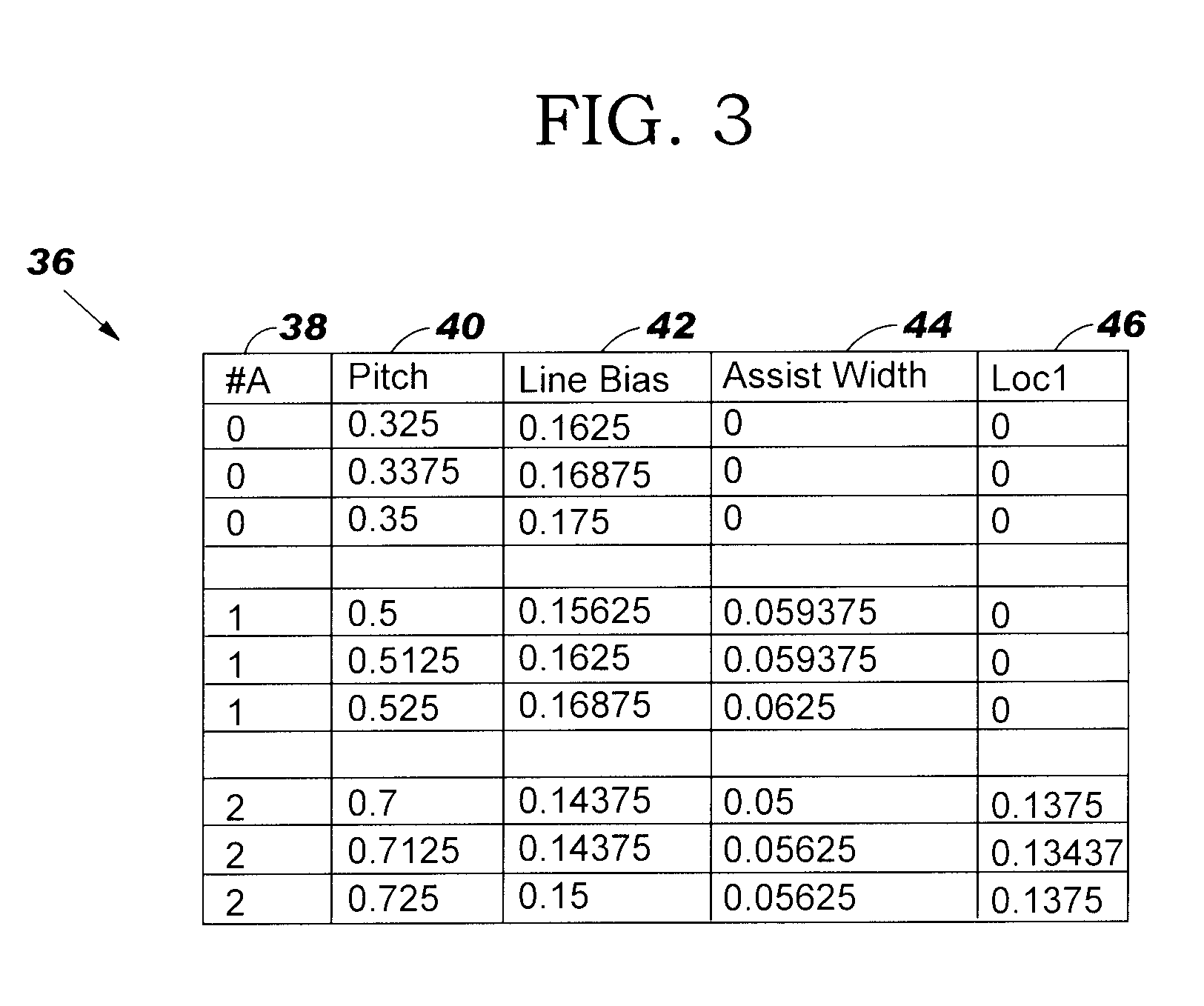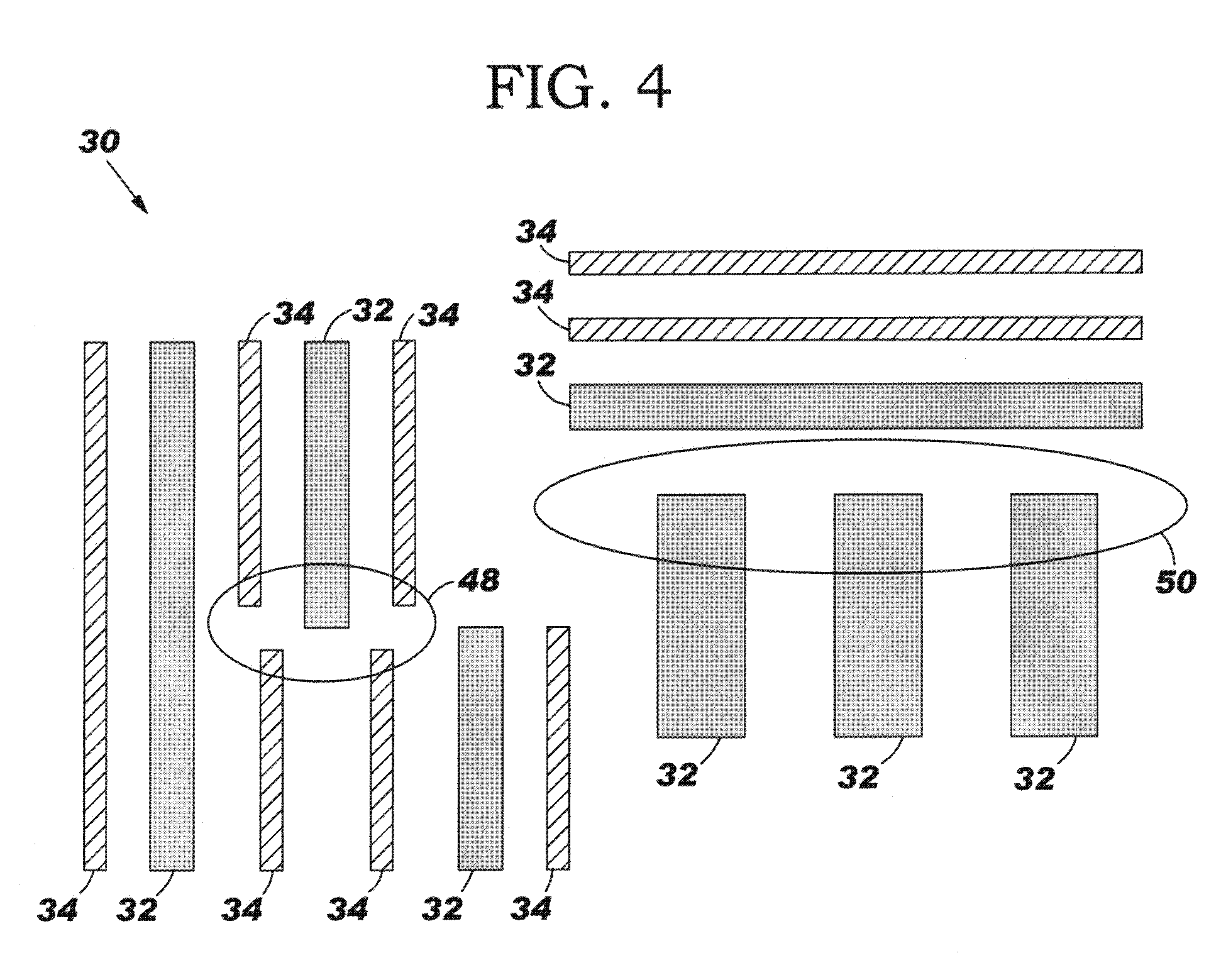Pliant SRAF for improved performance and manufacturability
a technology of sraf and manufacturability, applied in the field of manufacturing processes, can solve the problems of degrading process windows, imposing formidable problems, and challenging conventional optical lithography, and achieve the effect of improving lithographic performance and increasing the coverage of srafs
- Summary
- Abstract
- Description
- Claims
- Application Information
AI Technical Summary
Benefits of technology
Problems solved by technology
Method used
Image
Examples
Embodiment Construction
[0034]In the following description, numerous specific details may be set forth to provide a thorough understanding of the present invention. However, it will be obvious to those skilled in the art that the present invention may be practiced without such specific details. In other instances, well known features may have been shown in block diagram form in order not to obscure the present invention in unnecessary detail.
[0035]The present invention provides a method for increasing coverage of SRAFs in a given layout. In particular, the present invention provides a set of possible SRAF placement and sizing rules for a given pitch, ranked according to some figure of merit. The figure of merit may include, for example, process window (PW) area, mask error factor (MEF), depth of focus (DOF), percent coverage, etc., or combinations thereof. During SRAF placement, rather than using only the single “best” SRAF solution that optimizes the figure of merit (as is done in the prior art), the meth...
PUM
| Property | Measurement | Unit |
|---|---|---|
| density | aaaaa | aaaaa |
| transparent | aaaaa | aaaaa |
| size | aaaaa | aaaaa |
Abstract
Description
Claims
Application Information
 Login to View More
Login to View More - R&D
- Intellectual Property
- Life Sciences
- Materials
- Tech Scout
- Unparalleled Data Quality
- Higher Quality Content
- 60% Fewer Hallucinations
Browse by: Latest US Patents, China's latest patents, Technical Efficacy Thesaurus, Application Domain, Technology Topic, Popular Technical Reports.
© 2025 PatSnap. All rights reserved.Legal|Privacy policy|Modern Slavery Act Transparency Statement|Sitemap|About US| Contact US: help@patsnap.com



